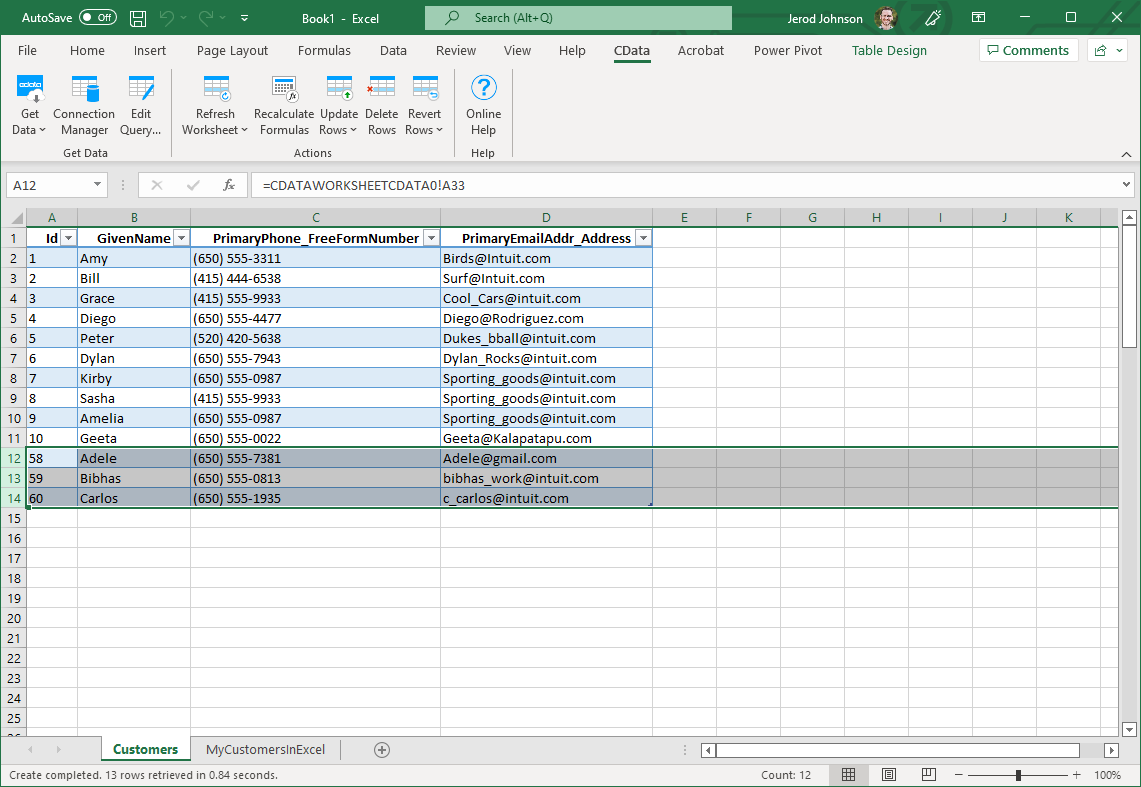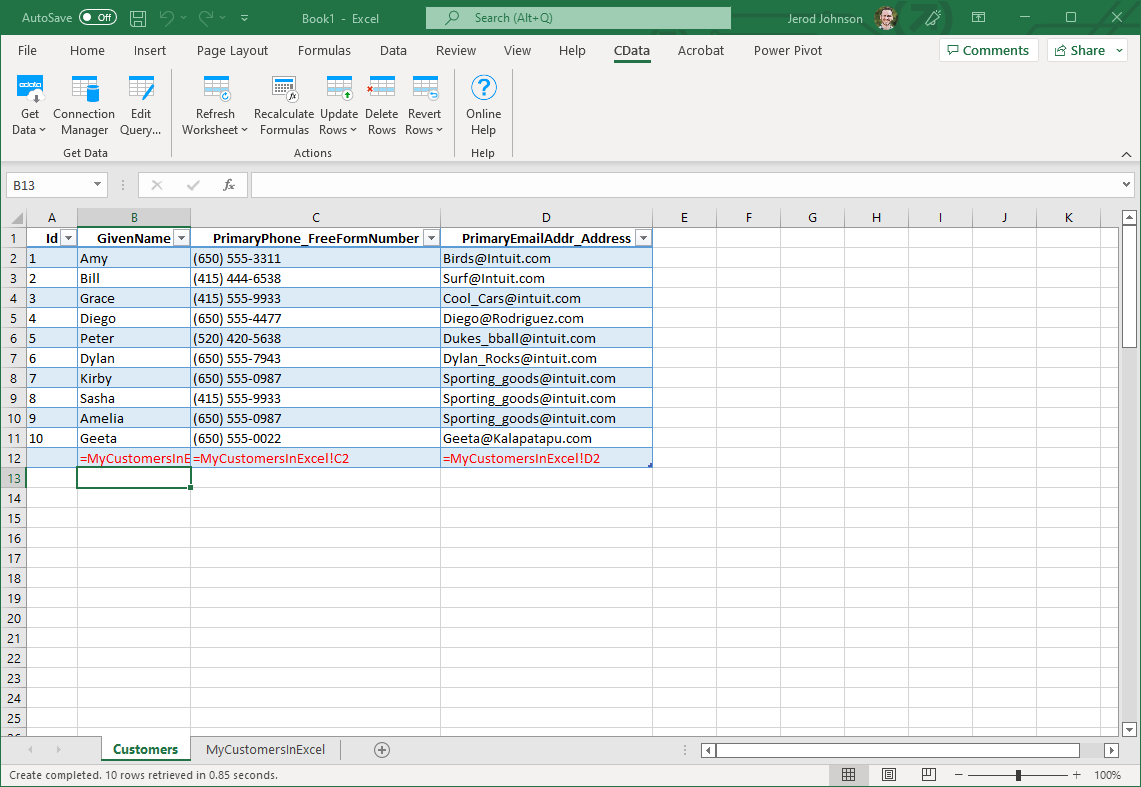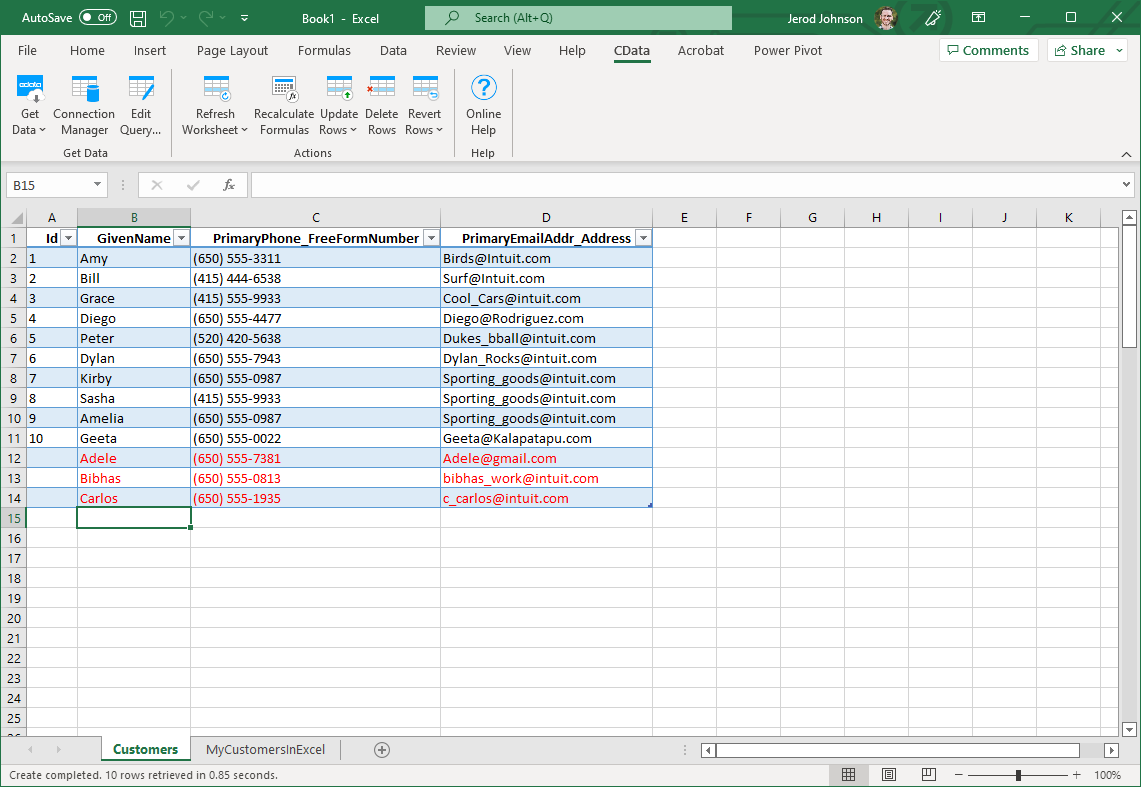Discover how a bimodal integration strategy can address the major data management challenges facing your organization today.
Get the Report →How to update Elasticsearch from Excel
This article explains how to transfer data from Excel to Elasticsearch using the Excel Add-In for Elasticsearch.
The CData Excel Add-In for Elasticsearch enables you to edit and save Elasticsearch data directly from Excel. This article explains how to transfer data from Excel to Elasticsearch. This technique is useful if you want to work on Elasticsearch data in Excel and update changes, or if you have a whole spreadsheet you want to import into Elasticsearch. In this example, you will use the Orders table; however, the same process will work for any table that can be retrieved by the CData Excel Add-In.
Establish a Connection
If you have not already done so, create a new Elasticsearch connection by clicking From Elasticsearch on the ribbon.
Set the Server and Port connection properties to connect. To authenticate, set the User and Password properties, PKI (public key infrastructure) properties, or both. To use PKI, set the SSLClientCert, SSLClientCertType, SSLClientCertSubject, and SSLClientCertPassword properties.
The data provider uses X-Pack Security for TLS/SSL and authentication. To connect over TLS/SSL, prefix the Server value with 'https://'. Note: TLS/SSL and client authentication must be enabled on X-Pack to use PKI.
Once the data provider is connected, X-Pack will then perform user authentication and grant role permissions based on the realms you have configured.
Retrieve Data from Elasticsearch
To insert data into Elasticsearch, you will first need to retrieve data from the Elasticsearch table you want to add to. This links the Excel spreadsheet to the Elasticsearch table selected: After you retrieve data, any changes you make to the data are highlighted in red.
- Click the From Elasticsearch button on the CData ribbon. The Data Selection wizard is displayed.
- In the Table or View menu, select the Orders table.
- In the Maximum Rows menu, select the number of rows you want to retrieve. If you want to insert rows, you need to retrieve only one row. The Query box will then display the SQL query that corresponds to your request.
- In the Sheet Name box, enter the name for the sheet that will be populated. By default the add-in will create a new sheet with the name of the table.
Insert Rows to Elasticsearch
After retrieving data, you can add data from an existing spreadsheet in Excel.
- In a cell after the last row, enter a formula referencing the corresponding cell from the other spreadsheet; for example, =MyOrdersSheetInExcel!A1.
![A local copy of a table. One row will be inserted. (QuickBooks is shown.)]()
- After using a formula to reference the cells you want to add to Elasticsearch, select the cells that you are inserting data into and drag the formula down as far as needed. The referenced values you want to add will be displayed on
the Orders sheet.
![The range of changes to update. (QuickBooks is shown.)]()
- Highlight the rows you want to insert and click the Update Rows button.
As each row is inserted, the Id value will appear in the Id column and the row's text will change to black, indicating that the record has been inserted.









